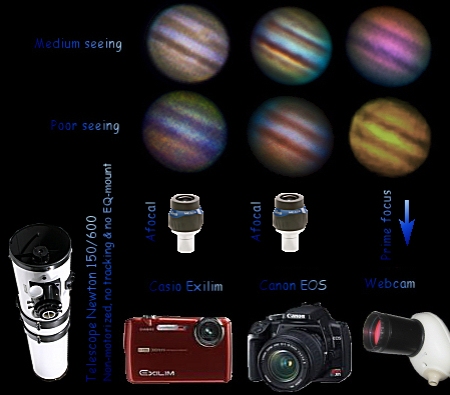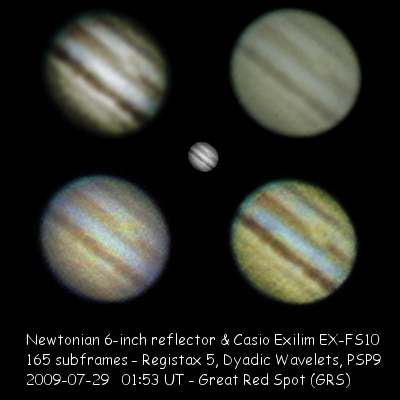Lacking of an equatorial mount I have built myself a kind of manual tracking system that keeps into the field of view of a webcam a planet like Jupiter, for 3 minutes. This is long enough to record useful data and then post-process it with aggressive wavelets.
The resulting tracking is not at all perfect. You may see Jupiter swinging around the screen. It is important to capture the data at a fast shutter speed (1/100 sec.) to avoid motion blur in every frame because the planet is always dancing.
In spite of this movement, the results after stacking are very good. Here I show this really simple system and the resulting yesterday’s Jupiter with the webcam:
![]()
![]()
![]()
As you can see the Manual-Crazy-Tracking is a very simple system that consists in a rubber band attached to the tripod handle. If you try to track manually directly pushing the tripod handle, the shaking is excessive and you would need a very very fast shutter speed to get some useful data. The rubber band is necessary to reduce vibrations and increase the shift movement control.
At beginning Jupiter is located in the center of the field of view with no need to any corrections. As long as it drifts due to its sidereal movement you will have to pull using the rubber band in order to keep it in the center of the screen (it is supposed you have a laptop there capturing and showing images from the webcam). This way you may have Jupiter centered in the screen for a long time. You will have time to focus (left hand pulling the rubber band and right hand tweaking the focuser) and time to expose.


